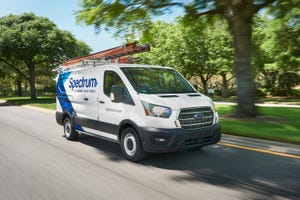Cisco Sees Optics Innovation, Manufacturing Automation in Luxtera
Why spend more than $600M on a company that makes optical transceivers? It wasn't just one product, but an entire automated manufacturing process that may help Cisco stay ahead of future bandwidth bottlenecks.

Webscale companies and enterprises that have billions of customers and devices connected to their networks are pushing routers and switches to their limits.
For networking equipment providers like Cisco Systems Inc. (Nasdaq: CSCO), that creates a constant challenge to stay ahead of bandwidth bottlenecks, whether they be in the data center, in the service provider network, or on the line card of a router or switch.
"[Webscale providers] say, deliver me the performance, deliver the reliability, deliver the form factor and deliver the cost, and if you can do those things, you can have my business," Bill Gartner, VP and GM of Cisco's Optical Systems and Optics Group, told Light Reading on Tuesday.
Protecting itself against those networking constraints is one reason behind Cisco's announcement today that it would buy Carlsbad, Calif.-based Luxtera Inc. for $660 million in cash. The deal is expected to close in the third quarter of Cisco's fiscal year 2019, pending regulatory approvals. (See Cisco to Buy Luxtera for $660M in Cash.)
Longer term, these cloud providers and webscale companies are wanting to get "the lowest cost per bit while moving all this capacity around the data center -- and in and out of the data center -- [they] need to get the lowest cost per bit," said Gartner.
Cisco wants to win in both scale and performance. As Gartner explained, each time there's a bit rate transition in networking gear, say from 100 Gigabit Ethernet (GbE) to 400GbE, there's a point where making the newer equipment, with faster system ports, gets less and less expensive as the volumes increase.
But as you go from 400GbE to 800GbE to 1.6 Terabits, "at some point we're going to have challenges getting all that capacity off a line card and, back it up, you're going to have all that capacity coming off an ASIC and you're going to need a different optics architecture to do that," Gartner said. "We want to be in a position to satisfy that and influence it as well."
Manufacturing automation was another big reason Cisco looked at Luxtera.
"They've done a terrific job of really automating the entire manufacturing process -- from the wafer to the final package -- and that takes huge costs out, it improves yields and improves the throughput and allows them to deliver at scale," Gartner said.
Regardless of the product set both companies have now, Cisco felt Luxtera is in the best position to figure out how to bring together silicon and optics in a way that could result in big volume production, which is quite a challenge in the optical networking space.
Even though Cisco is not a significant customer of Luxtera's now, buying the company puts it in a position to improve the cost per bit of some of its gear, while allowing it to profit from competitors who may also be customers of Luxtera's optical modules and optical transceivers.
"Cisco is thinking ahead of in terms of switching and routing," Gartner said. "We rely on merchant silicon, but we also make massive investments in custom silicon. And if we're going to leverage those investments fully, we don't want to find ourselves in a situation where we're actually stranded and say we can't move this thing forward because we can't move the signals around a board or we can't get the signals off the ASIC and so at some point… we're gonna have to [think] about how to converge optics and silicon in order to continue to enhance and grow the capacity of a single switch or a router."
— Phil Harvey, US News Editor, Light Reading
About the Author(s)
You May Also Like




_International_Software_Products.jpeg?width=300&auto=webp&quality=80&disable=upscale)







